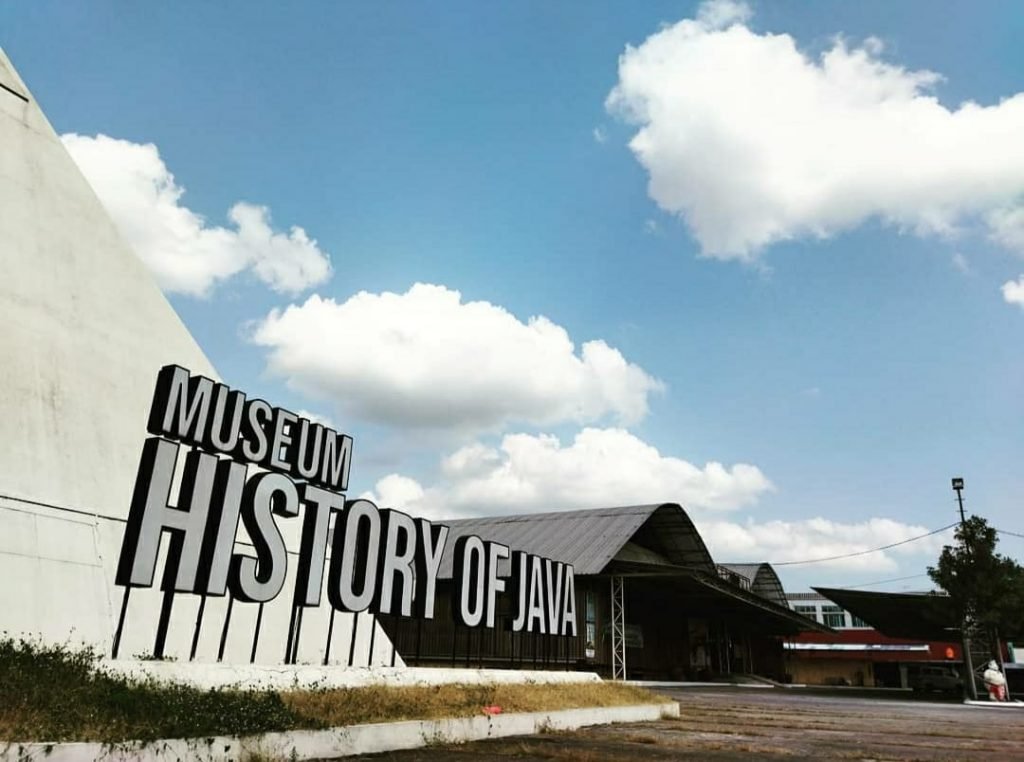
Bantul – A hall-shaped room with walls adorned by realistic paintings combined with three-dimensional ancient-themed props. A family dressed in traditional Central Javanese attire is seen posing at several picture spots on the walls.
This space is not located in a mall or a photo booth in a restaurant, but an interactive educational area in a museum in Yogyakarta: the History of Java.
“Young people usually prefer the interactive content here,” said Dimas Rival, one of the Storytellers at the History of Java.
The History of Java museum building has a unique design. However, like any museum, it displays historical objects for educational and literacy purposes. The exhibits range from terracotta statues guarding ancient graves dating back to the pre-Christian era to artifacts from the modern era of Javanese kingdoms.
What sets it apart is the visitor flow, designed to present content in a chronological manner, making it easier to understand. The content captions not only describe the physical objects but also narrate their historical significance. Storytellers are available to guide visitors and answer their questions.
“Our goal is to help visitors better understand the richness of Indonesian culture, especially here on the island of Java,” said museum operational staff member, Yenny Dwiwati.

The History of Java museum centers its content on the history and culture of Java Island. Many assume that the museum is connected to the legendary book of the same title written by Raffles.
“It’s not related. We simply wanted to draw inspiration from the impression of the book to bring the museum to life,” explained Yenny.
The museum’s pyramid-shaped building symbolizes the gunungan of wayang and the traditional tumpeng. The History of Java museum incorporates technology into its educational boards through the use of Augmented Reality.

Marketing Communicator of d’Topeng Kingdom, Elly Halsamer, acknowledged that the use of technology is intentionally applied in all museums managed by d’Topeng Kingdom, including the History of Java.
“We have managed four museums, including the History of Java. All four museums utilize technology to support the display of museum content,” said Elly.
With an application that can be downloaded via a Google browser, visitors can bring objects on the education board to life in three dimensions and then take selfies using the application. This Augmented Reality technology has become one of the features most appreciated by visitors.
Raisa, one of the visitors, invited her friends to visit the museum after learning about the AR technology and the photobooth available at the museum.

“Not just selfies, each selfie also comes with educational value,” she said.
One of the strengths visitors feel when visiting this museum is the storytelling provided by the museum’s Story Tellers. These Story Tellers are well-versed in public speaking and building personal relationships.
“All staff members are also given strict guidelines to be child-friendly, including how to explain the content,” said Elly.
The child-friendly policy is not limited to attitude but also includes how content is explained. Lukman, a visitor from Jakarta, acknowledged this as one of the most positive aspects of the History of Java museum.
“I was quite impressed when the Story Teller, before explaining content unsuitable for my child, asked for my consent as the child’s parent,” said Lukman.
Sigit, a visitor from Karanganyar, suggested that all museums provide Story Tellers to ensure that content inappropriate for children is properly addressed.
“This is very important for teachers who will continue the discussion later in class or for parents at home,” he said.
Becoming part of history through selfies is possible for visitors because the museum provides costumes that match the diorama themes for free. Raisa even brought her own lurik and batik outfits to the museum after learning about the diorama photos during her research on the History of Java museum beforehand.
“So I wouldn’t have to queue, and the clothes fit me perfectly,” she said.
Story Tellers dress in traditional attire every Kamis Pahing (a traditional Javanese calendar day), which often leads visitors to request photos with them.
Fifi shared her experience, saying that learning about the history of Java at this museum felt far from the dark and eerie atmosphere she encountered at other museums.
“It’s enjoyable; we learn about ancient times in a modern way,” said Fifi.
What the museum on Parangtritis Street KM 5.6 Bantul, DIY, is doing offers a refreshing take on educational tourism in Indonesia. Visitors can enjoy a fun tourism experience while gaining knowledge at the same time.
News link: https://m.liputan6.com/regional/read/4043694/history-of-java-kekunoan-dalam-balutan-kekinian
